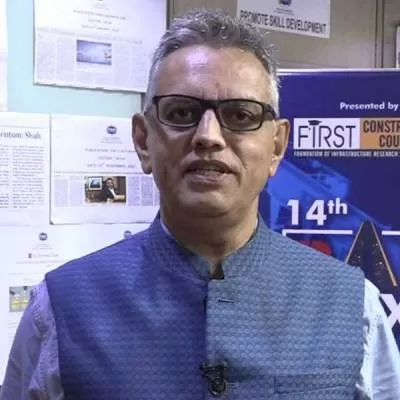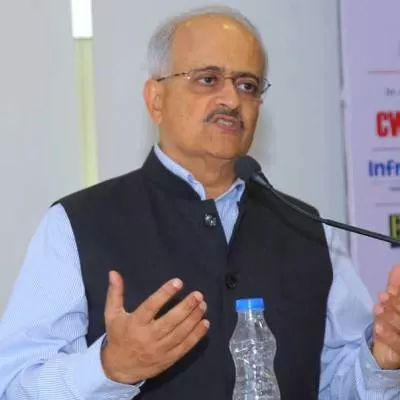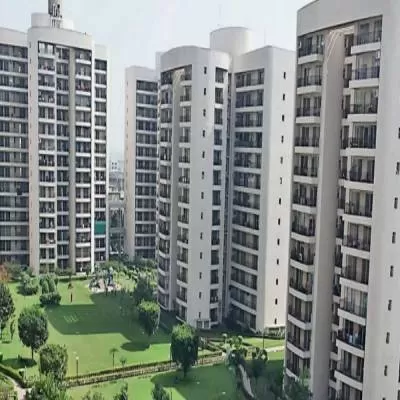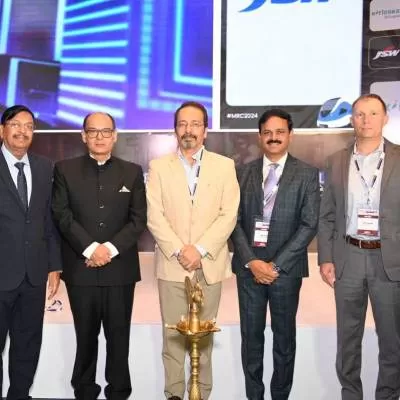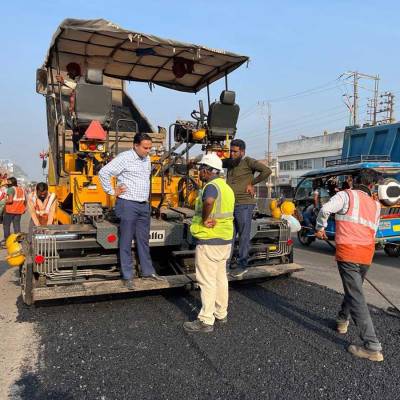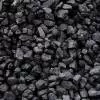- Home
- Real Estate
- No bouquets for brickbat coba
No bouquets for brickbat coba
India has a coastline of over 4,000 km. Generally, coastal areas receive more than average rainfall in the rainy season, making homes in these areas more prone to leakages from terrace and walls. This not only leads to peeling of paint and ruined interiors but the formation of fungus. Such unhygienic conditions can be detrimental to residents too. So, how can we tackle such severe leakage issues?
Traditional methods In India, terrace waterproofing has always been done with traditional materials. Typical conventional systems like brickbat coba (BBC), lime terracing or the mud phuska technique are still very prevalent. These are supposed to provide waterproofing with some insulation against heat. BBC is used particularly for waterproofing flat roofs, primarily RCC with some thermal insulation (mud phuska) in the coastal region. This consists of putting brick bats on roofs to give a slope and grouting the same with mortar admixed with various proprietary chemicals, most in the nature of waterproofing compounds. In the new construction, it intends to provide a good slope at a moderate cost so that the water can drain away.
However, this is not ideal for terrace waterproofing - all it provides is a slope to the terrace to drain away accumulated water. It is also often touted as providing heat insulation, which is untrue. This claim can't be quantified as it is not measurable.
Moreover, it has been observed that the coba surface attains the same temperature as the bare cement slab during peak hours in summer.
The limitations
As conventionally done, using BBC has several limitations in the case of terrace waterproofing:
Imposes unnecessary load: The thickness of the coba is maintained at about 125 mm to 150 mm, which adds unnecessary dead load on the slab.
Once cracks appear, they are almost impossible to repair, and water, as in the case of the tar felting, travels below the coba and exits wherever it finds a path. It is impossible to trace the inlet point to repair it.
Cracks reappear owing to temperature variations: Using BBC is rigid and cannot accommodate movements owing to thermal stresses. This leads to cracks. Although successful in the damp heat of coastal regions, the treatment cracks up completely when it comes into contact with variations of temperature - between day and night - faced in North India.
Damages mother slab: Some parts of the coba stick so well to the concrete that even if an attempt is made to dismantle it, the mother slab gets damaged.
Bricks act as water reservoir: The bricks used in this system are porous and when water enters, they readily absorb and hold a large amount of water, creating a sort of reservoir above the slab. Owing to the poor quality of bricks used in BBC, they absorb water over a period of time and become loose, giving way to more leakages.
Creates noise, debris: As coba adheres firmly to the slab, the use of chisels and hammers can create cracks on the slab, aggravating the problem rather than resolving it. Disposal of debris from the dismantled system is also cumbersome. Re-laying the BBC again is certainly not the answer to this problem.
Lack of skilled manpower: These days, owing to a lack of skilled manpower and attention to detail, rainwater seeps through the cracks in the brick bat tiling and collects under the mud phuska causing seepage into the RCC roof. To repair this, all the layers of the roof have to be opened up and the waterproofing layer redone. This causes hardship to the user as well as increased costs.
These concerns have all been validated by experts in the construction industry (see box on 'Expert Speak').
An alternate
Dr Fixit Institute of Structural Protection & Rehabilitation confirms that hardly anybody internationally uses methods such as BBC for terrace waterproofing. The best global practice is to coat the terrace with elastomeric coatings. These are polymeric coatings, which has elasticity and can bridge cracks in concrete. Readily available in the market, they are priced between Rs 25 per sq ft to Rs 60 per sq ft, depending on the polymer chosen.
Elastomeric coatings have certain definite advantages over conventional BBC:
• They do not impose any unnecessary load on the mother slab, as they are just a coating of 300-400 microns.
• These coatings have high crack bridging ability. As they are elastic in nature, they can accommodate movements owing to thermal stresses.
• They can be easily applied by brush or roller. This does not damage the mother slab while application.
• They do not create any noise and debris while application. Also, they can be applied over existing BBC, without dismantling it.
• If any patch is damaged owing to some reason, it can be coated with ease again. • This method ensures terrace waterproofing in considerably less time compared to BBC.
• This method lasts for a long time - five years - without any hassles.
Expertspeak
• Consultants Gherzi Eastern and DCL: "BBC will lead to surface cracks, and hence it is not an ideal waterproofing system. The quality of bricks used in BBC is usually not good. Hence, over a period of time, they absorb water, become loose and give way to more leakages. Moreover, BBC should not be confused with waterproofing. It is only a good weatherproof layer."
• Rohit Krishan Gulati, Principal Architect, Incubis Consultants (I), New Delhi "Using BBC works well when the quality of workmanship is high and masons are well experienced in taking care of the details and jointing. But there is a lack of skilled labour and lack of attention to detail because of which the system fails miserably."
Sanjay Bahadur, CEO-Global Constructions Chemicals, Pidilite Industries, tells us why brickbat coba is not the ideal material for terrace waterproofing. India has a coastline of over 4,000 km. Generally, coastal areas receive more than average rainfall in the rainy season, making homes in these areas more prone to leakages from terrace and walls. This not only leads to peeling of paint and ruined interiors but the formation of fungus. Such unhygienic conditions can be detrimental to residents too. So, how can we tackle such severe leakage issues? Traditional methods In India, terrace waterproofing has always been done with traditional materials. Typical conventional systems like brickbat coba (BBC), lime terracing or the mud phuska technique are still very prevalent. These are supposed to provide waterproofing with some insulation against heat. BBC is used particularly for waterproofing flat roofs, primarily RCC with some thermal insulation (mud phuska) in the coastal region. This consists of putting brick bats on roofs to give a slope and grouting the same with mortar admixed with various proprietary chemicals, most in the nature of waterproofing compounds. In the new construction, it intends to provide a good slope at a moderate cost so that the water can drain away. However, this is not ideal for terrace waterproofing - all it provides is a slope to the terrace to drain away accumulated water. It is also often touted as providing heat insulation, which is untrue. This claim can't be quantified as it is not measurable. Moreover, it has been observed that the coba surface attains the same temperature as the bare cement slab during peak hours in summer. The limitations As conventionally done, using BBC has several limitations in the case of terrace waterproofing: Imposes unnecessary load: The thickness of the coba is maintained at about 125 mm to 150 mm, which adds unnecessary dead load on the slab. Once cracks appear, they are almost impossible to repair, and water, as in the case of the tar felting, travels below the coba and exits wherever it finds a path. It is impossible to trace the inlet point to repair it. Cracks reappear owing to temperature variations: Using BBC is rigid and cannot accommodate movements owing to thermal stresses. This leads to cracks. Although successful in the damp heat of coastal regions, the treatment cracks up completely when it comes into contact with variations of temperature - between day and night - faced in North India. Damages mother slab: Some parts of the coba stick so well to the concrete that even if an attempt is made to dismantle it, the mother slab gets damaged. Bricks act as water reservoir: The bricks used in this system are porous and when water enters, they readily absorb and hold a large amount of water, creating a sort of reservoir above the slab. Owing to the poor quality of bricks used in BBC, they absorb water over a period of time and become loose, giving way to more leakages. Creates noise, debris: As coba adheres firmly to the slab, the use of chisels and hammers can create cracks on the slab, aggravating the problem rather than resolving it. Disposal of debris from the dismantled system is also cumbersome. Re-laying the BBC again is certainly not the answer to this problem. Lack of skilled manpower: These days, owing to a lack of skilled manpower and attention to detail, rainwater seeps through the cracks in the brick bat tiling and collects under the mud phuska causing seepage into the RCC roof. To repair this, all the layers of the roof have to be opened up and the waterproofing layer redone. This causes hardship to the user as well as increased costs. These concerns have all been validated by experts in the construction industry (see box on 'Expert Speak'). An alternate Dr Fixit Institute of Structural Protection & Rehabilitation confirms that hardly anybody internationally uses methods such as BBC for terrace waterproofing. The best global practice is to coat the terrace with elastomeric coatings. These are polymeric coatings, which has elasticity and can bridge cracks in concrete. Readily available in the market, they are priced between Rs 25 per sq ft to Rs 60 per sq ft, depending on the polymer chosen. Elastomeric coatings have certain definite advantages over conventional BBC: • They do not impose any unnecessary load on the mother slab, as they are just a coating of 300-400 microns. • These coatings have high crack bridging ability. As they are elastic in nature, they can accommodate movements owing to thermal stresses. • They can be easily applied by brush or roller. This does not damage the mother slab while application. • They do not create any noise and debris while application. Also, they can be applied over existing BBC, without dismantling it. • If any patch is damaged owing to some reason, it can be coated with ease again. • This method ensures terrace waterproofing in considerably less time compared to BBC. • This method lasts for a long time - five years - without any hassles. Expertspeak • Consultants Gherzi Eastern and DCL: "BBC will lead to surface cracks, and hence it is not an ideal waterproofing system. The quality of bricks used in BBC is usually not good. Hence, over a period of time, they absorb water, become loose and give way to more leakages. Moreover, BBC should not be confused with waterproofing. It is only a good weatherproof layer." • Rohit Krishan Gulati, Principal Architect, Incubis Consultants (I), New Delhi "Using BBC works well when the quality of workmanship is high and masons are well experienced in taking care of the details and jointing. But there is a lack of skilled labour and lack of attention to detail because of which the system fails miserably."



